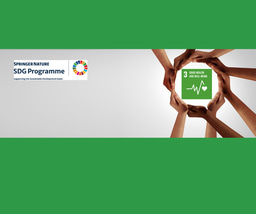The Neuroscience of the 'Transfer Problem' - Part 3
Published in Neuroscience

In the previous two columns (here and here) I introduced the ‘transfer problem’, and discussed two levels through which the activity of the brain is constrained by the context in which it occurs: ‘encellment’ and ‘embrainment’. Here I will look at two further, increasingly broad levels of explanation through which our knowledge and skills may be constrained by the context in which they are learned, so that our representations of the world are only ever ‘partial’.
3. Bodily context – ‘embodiment’
The brain does not sit in glorious isolation from the rest of the body. Some hard-wired nervous behaviours, such as reflexes, can in fact form the basis for the beginnings of brain development. Infants make spontaneous reaching movements from an early age and even new-born infants will move their limbs to block a light beam (Van der Meer et al, 1995). These kinds of behaviour initiate the beginnings of feedback mechanisms between the visual and motor areas of the brain and eventually allow for the development of complex visually-guided behaviour. Of equal importance, the design of some parts of the body can constrain brain development by ensuring that it does not need to develop certain skills; cricket ears are designed to respond preferentially to male phonotaxis (a sound made by rubbing one wing against the other). The cricket brain has no such specialisation for making this distinction, because the job has already been done (Thelen et al., 1996). In human cognition, examples of ‘embodiment’ might include state-dependent memory: the finding that we recall information more successfully in a similar ‘state’ to when we learned it, for example after exercise (Miles and Hardman, 1984) or even when drunk (Goodwin et al., 1969).
What does this mean for transfer?
The development of our brains is constrained and uniquely differentiated by our nervous systems and by the body in which we find ourselves. Again, this is not just the case between individuals but also within individuals as they develop over time, and as they pass through the myriad different internal states which characterise our existence. The representations that we have of the world will reflect these changing embodiments, and will be ‘partial representations’ in that they are formed, and linked to, this embodied context. This therefore provides further scope for learning to be constrained by the situation (in the widest possible sense) in which the information was initially encountered. The Goodwin et al. paper is particularly relevant here, as it tested two outcomes: recognition and transfer. They found that, whilst recognition memory was not significantly affected by the a change in states between learning and recall, the ability to transfer the information was. Transfer, as a more complicated cognitive procedure than simple recall, is as a result even more susceptible to being restricted by the context in which it occurs.
4. Social context – ‘ensocialment’
The concept of ensocialment, the idea that the social context for any act of learning is crucial to shaping the learning that takes place, will be the most familiar of these four levels of analysis to educators. Vygotsky’s social constructivist theories are probably the most famous educational application of this sort of idea. People learn from others with more skills than them, with the more knowledgeable mentors using language and guidance to ‘scaffold’ the learner’s interactions with the world in the most productive manner. The concept of scaffolding, a supportive structure which is gradually removed as the learner gains in ability, is used to one degree or another by almost every major educational approach.
What does this mean for transfer?
The type of scaffolding that is used may become inextricably linked to the solution that is produced, to the point where the ‘partial representation’ that we have of the solution is not accessed when the problem is framed differently. Think of Prez’s dice-rollers on the street corner (see post 1) or the Brazilian market-children, still struggling when trying to solve the same problems back in the classroom.
I hope that what has emerged from these posts so far is that context-specificity is a fundamental characteristic of brain function. What I will attempt to do in the final post in this series is to summarise what implications I think this characteristic has for education.
Next post here.
These posts are adapted from a version which originally appeared on my personal blog.
Follow the Topic
Your space to connect: The Psychedelics Hub
A new Communities’ space to connect, collaborate, and explore research on Psychotherapy, Clinical Psychology, and Neuroscience!
Continue reading announcement



Please sign in or register for FREE
If you are a registered user on Research Communities by Springer Nature, please sign in